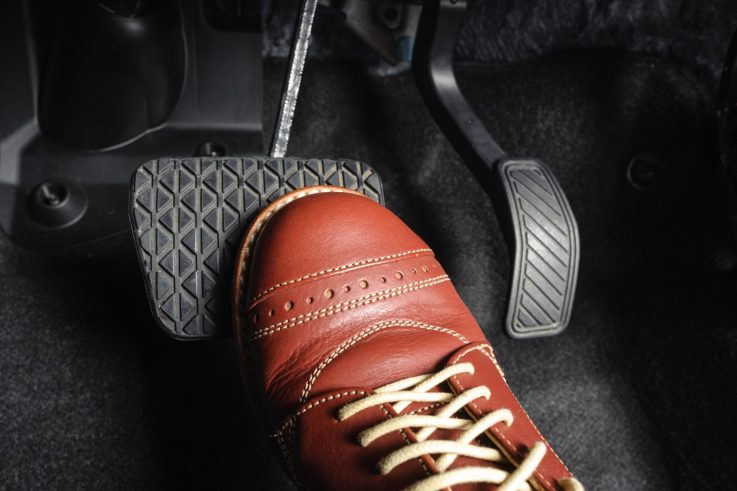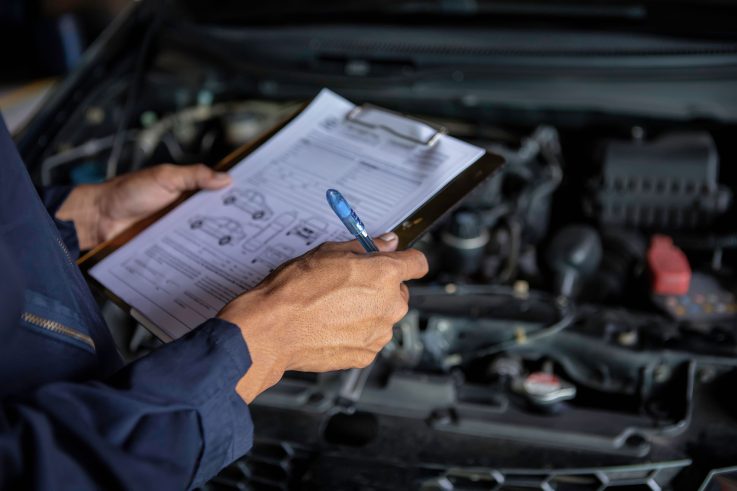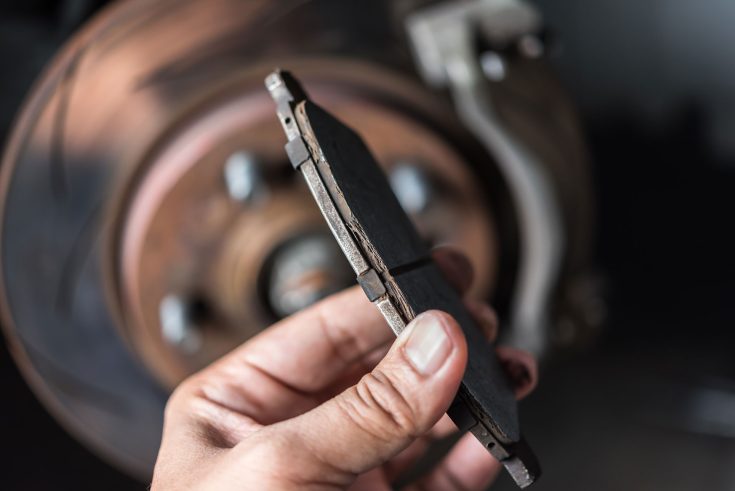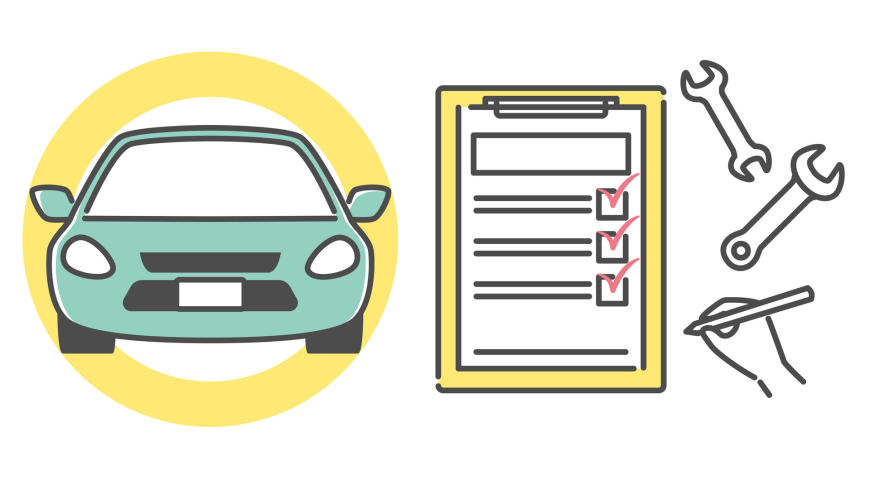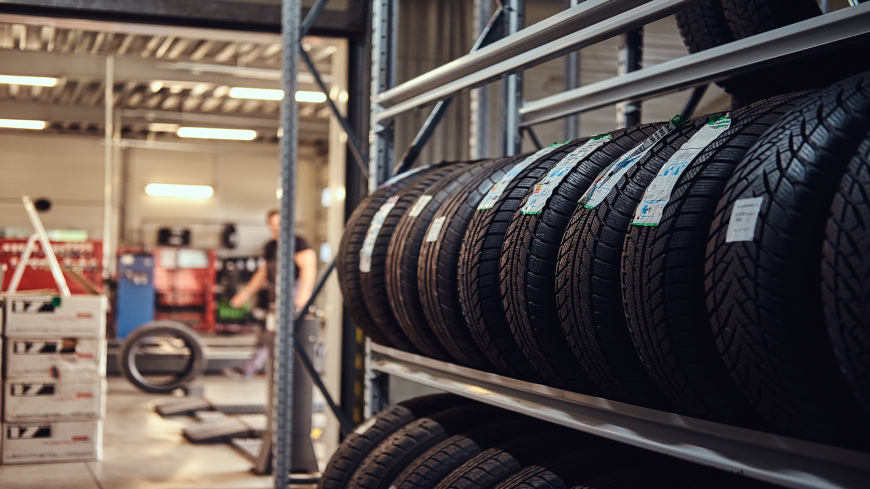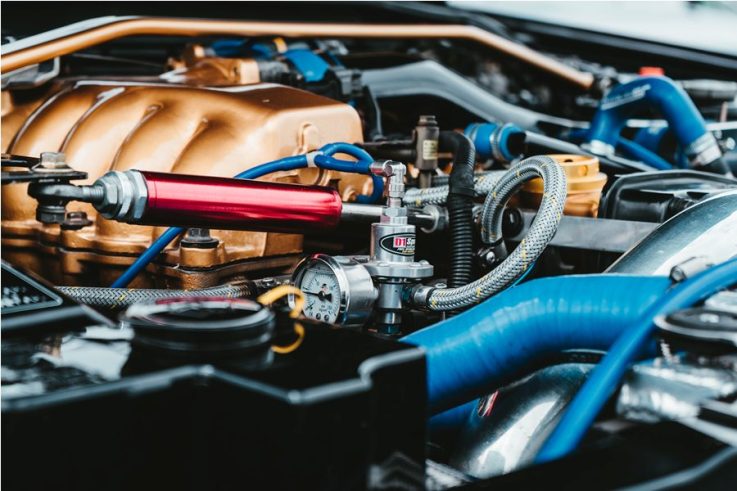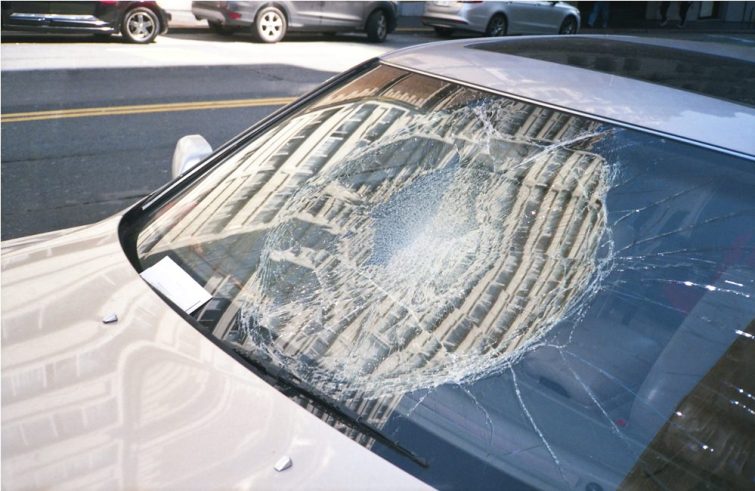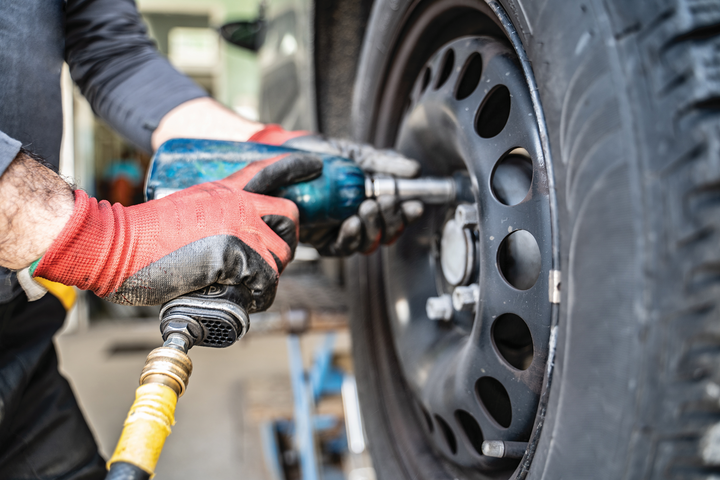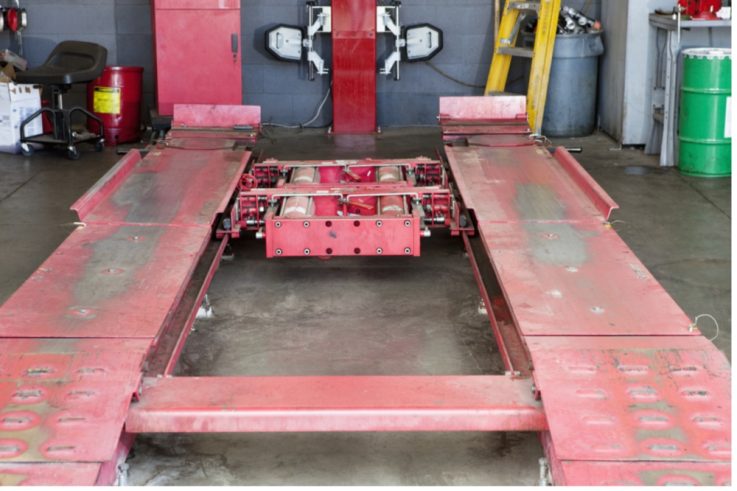- by ShowcaseCollisionInc
- 0
Common Brake Problems and Solutions for Your Car
It shouldn’t be surprising that your vehicle’s brakes wear out so often, given the fact that they are one of the most used systems in your entire vehicle. The braking system is also one of the most important systems on your vehicle because its functionality can either be life-saving or life-threatening in actual usage. Almost everyone has been obliged at one time or another to suddenly slam on the brakes to prevent a collision with some object, either wildlife, property, or even a pedestrian. Those are the times when you need your brakes to be functioning perfectly.
Anything less than that could result in serious or fatal injuries to the vehicle occupants, and to anyone else who might be involved. Therefore, it will be to your advantage to be aware of some of the most common problems occurring with your brakes. Even if you don’t intend to investigate or fix the problem yourself, it helps to identify the problem in the first place, so you can get the appropriate professional help. In this article, we’ll discuss some of the most common brake problems, so that you’ll know whether you need brake replacement, new brakes, or just some specialized brake service.
Brakes hanging up (not disengaging)
Sometimes breaks fail to completely disengage when your foot is removed from the brake pedal. When this happens, you may notice a smell like something is burning, which comes from all the heat that is generated by the brakes when they fail to disengage. Of course, it is completely unsafe to drive while the brakes are dragging or hung up like this, and it will definitely cause more damage to the brakes if you drive with them while engaged, because they’ll wear out much much faster. When brakes become hung up like this and do not disengage, it’s usually because the rotor or drum is rusted, the master cylinder return hole is clogged, the brake line has become pinched, the parking brake cable has seized up, or the calipers or pads have seized up.
Of these, the most likely cause is having the calipers or pads seize up. This can occur regardless of the age of your vehicle or its brakes and is often triggered by salt used on winter roads, that accumulates on the brake pads. Any parking brakes which are cable-operated might jam up in the same way, and will generally require the parking brake cable to be replaced. For the most part, this can be prevented by avoiding driving through deep puddles, as well as areas that are heavily salted during the wintertime. Of course, this may not always be possible, so after you have driven through such an area, it would be wise to clean the underside of the car as well as the wheels. This will prevent the possibility of a rust buildup, which will definitely degrade the brake system.
Shudder after repeated braking
This usually occurs when the rotors on your brakes are either bent or warped, which happens sometimes from a buildup of localized material on the surface of the rotors. This can be overcome by resurfacing the rotors and grinding them flat and smooth. However, this option is only available if the problem has not deteriorated to a severe point where resurfacing will not solve the problem. If rotors have become warped or bent because of overheating, this cannot be fixed by grinding the surface flat again, since the rotors will simply become warped again as soon as they are exposed to heat.
Hard pedal/Soft pedal
Sometimes you’ll notice poor performance from your brakes, where you might feel the brake pedal is either too easy or too difficult to depress normally. In the case of a soft pedal, the culprit could be any one of the following:
- failed wheel bearing
- overheated brake fluid
- failed master cylinder
- damaged wheel cylinders or calipers
- blown brake line
- low level of brake fluid
- air included in the brake fluid
- bad residual valve
- fluid leak in the system.
Of these, one of the most common issues comes in the area of the fluid level in the master cylinder reservoir. Any leak here might cause the fluid level to be so low that the failsafe braking system is also ineffective. When you notice a low fluid level, it will likely be because the pads are experiencing excessive friction, or the drums could be completely worn out. Sometimes brake hydraulics will get air in the lines after service has been performed, and it’s also possible for a bad master cylinder to inject air into the line. A bad wheel bearing can cause the brake pads to be pushed back into the caliper too far.
When you notice that it takes a great deal more pressure to bring your car to a stop than it normally would, this is a hard pedal indication on your brake system. Most of the time when you experience a hard pedal situation it will be due to a failure in the power boost system. Since the power booster uses an engine vacuum to help apply the brakes, it is a standard feature in most modern cars. If this booster or a vacuum hose becomes bad, it can cause a leak that will be expressed as rough engine idling or poor brake boost. Here are the likeliest causes of a hard pedal indication:
- bad check valve
- worn-out brake pads
- seized up calipers
- failed power booster
- leak in the vacuum hose
- complete collapse of the vacuum hose.
Squealing noise when braking
The annoying high-pitched sound which comes from your brakes sometimes is intended to alert you that you only have about 25% of your brake pad left intact. Of course, your brakes will also squeal more loudly when you run through a wet or glazed patch on the road, or you’re in stop-and-go traffic. In this case, depressing the brakes emphatically will generally clean off the surfaces and return your brakes to normal. There are also some factors that can trigger excessive noise because brake pads sometimes resonate in the same range they vibrate at during usage. This is because of different manufacturer tolerances, unexpected wear factors, different levels of friction with materials, and several other causes. You can generally overcome this by applying an anti-squeal paste, which raises the resonance outside the vibration range.
Sinking pedal
You may notice this situation when stopped at a traffic light, and you observe that the pedal is slowly sinking to the floor when your foot rests on it. This is often because a master cylinder is beginning to fail, or because somewhere in the system you have a leak. If you find that there are no leaks after investigation, the most likely cause of the sinking pedal issue is that one of the rubber seals on the master cylinder is leaking and allowing fluid to creep in. For this situation, and all others that are abnormal, you should have your brake system checked out by a professional. When your life and the lives of your passengers depend on great brake performance, you simply must have your brakes in good working order.
- by ShowcaseCollisionInc
- 0
Safe Driving Tips For Summer 2023
It’s a good idea to keep in mind some drivers safety tips whenever summer rolls around. Why? Statistics show that there are far more accidents on the highways of our country during summertime than during any other season of the year. This should be surprising, since driving conditions should be safer during summer than at other times. The truth is though, that Michigan summer driving can be the most dangerous time of the year to take a road trip, even if it’s not a cross-country or long-distance case.
The reason for the high incidence of accidents during summer is the fact that there are a great many more inexperienced drivers on the road during the summer season than at other times of the year. Your chances of encountering a novice driver are greater in the summertime than during spring, fall, or winter. Not even the icy, snowy roads of winter can make the season as potentially dangerous as summer for getting caught up in an accident. For that reason, we’ve listed some of the best safe driving tips, to keep you safe on the road and accident-free while doing Michigan driving during the busiest traffic times of the year.
Stay free of distractions
Distractions are one of the biggest causes of accidents on the country’s roadways, and these distractions can come in many different forms. For a mother driving young children, there can be distractions with youngsters’ behavior. Music might be playing too loudly, and can interfere with the driver’s concentration. You might be tempted to answer a phone call, or to text a response to a friend or relative. All these actions take focus away from the road where it belongs, and can easily lead to some kind of road mishap. Just because you’ve eaten fast food on driving trips before doesn’t mean it will be safe to do so this time – anytime your focus is on something other than traffic and the road, it’s possible for an accident to occur. Keep all distractions away from the driver, so you can enjoy a safe trip to whatever destination you have in mind.
Leave early
Many drivers have the attitude that they can make up some lost time on the road, after getting a late start on driving. This can be a very dangerous mindset to have, because it prompts you to take some chances while driving that you would recognize as dangerous any other time. It’s never a good idea to try and gain five or ten minutes by driving faster or taking shortcuts – more often than not, this results in a lapse in judgment while driving, and that’s when mishaps occur. By leaving a few minutes early, you’ll be able to relieve the need for speeding up or making up for lost time on the road. It will be safer for you and all your passengers, if you simply adopt your normal, safe approach behind the wheel.
Make sure to buckle up
The statistics regarding serious injuries and not wearing seat belts are alarming, to say the least. According to the National Highway Traffic Safety Administration, more than half of all fatal injuries each year are caused by the driver not wearing a seat belt. It only takes seconds to do, and it just might be the difference between staying safe inside the vehicle, and being thrown through a windshield, or suffering some other catastrophic injury. Make sure that you buckle up before starting off, and check to be sure that all passengers are likewise buckled up for extra safety. Your best chance of surviving an accident unscathed will always revolve around having a seat belt securely buckled in place around you.
Prepare adequately for long driving trips
If you’re planning a camping trip, or some other kind of cross-country road trip, it will require that you pack lots of extra things like luggage, snacks, water, recreational equipment, and maybe some kind of entertainment for the kids. All this needs to be stored in a manner that will not interfere with the driver’s line of sight with mirrors and windows. If the driver can’t see traffic situations clearly so they can be reacted to, it could cause a serious problem at some point while driving. When you know you have a long trip coming up, make adequate preparations so that you have everything you need, and so it doesn’t distract the driver.
Be ready for emergencies
Anytime you’re out on the road, it doesn’t mean ordinary life situations get suspended. You could have any one of a hundred different emergencies while driving, and the better prepared you are for them, the likelier it is that you’ll handle the crisis successfully. Be ready for a blowout with a spare tire and tire-changing equipment, have a First Aid kit on hand for medical emergencies, and make sure you have snacks and beverages available for youngsters. By preparing for potential emergencies, you should be able to handle them much more readily when they occur, and there will be far less disruption to your scheduled trip.
- by ShowcaseCollisionInc
- 0
Getting a Free Car Repair Estimate
No one ever really anticipates being in an automobile accident, but it can help immensely if you know how to react after you’ve been involved in one. There are certain steps that have to be followed at the time of the accident, so it can be properly reported and managed by support personnel. Injuries to passengers will complicate the issue significantly, since all kinds of medical and hospital care may be necessary, and it may even have a significant impact on people’s lives. After dealing with any injuries to passengers, the next thing you’ll need to consider is how to get your vehicle repaired so you can get back on the road as soon as possible.
The first thing you’ll need to do is contact your insurance company, so that the steps can be taken to provide coverage for the expenses that will certainly arise. After contacting your insurance company, the next thing you’ll need to do is to get free car repair estimates from one or more reliable collision shops that you know of, or have worked with in the past. This article will discuss how you should go about getting car repair estimates that you can live with, so that you can initiate the process of having any necessary work performed on your vehicle.
How the repair estimate process works
After you have narrowed down your list of candidates to just a few, you need to start contacting them to set up review appointments. It should take less than half an hour for any repair professional to provide you with an estimate, even after a thorough examination. When an estimator reviews your vehicle, he/she will attempt to determine the extent of the damage both external and internal, and they will probably be taking some notes during the process. After they have completely inspecting the vehicle, they’ll be able to provide you with an estimate in writing. In most cases, the written estimate will include all of the following features:
- a detailed listing of all associated costs, including the cost of labor, all replacement parts needed, and potentially some additional fees
- a clear description of all the work that needs to be done in order to restore your vehicle to the same condition it was in before the accident
- a summary of the total amount of repair costs, usually with some kind of declaration about the cost not being exceeded by a specific amount unless you provide your explicit approval
Once you have these written estimates in hand, you’ll know what to expect in terms of the extent of repairs and the length of time necessary to restore your vehicle. Even if no written estimate is required by law in your state, it will be to your advantage to obtain one anyway. Most reputable collision shops will have no problem providing you with a written estimate, since they wish to be recognized as reputable companies and this is one way of doing so. Make sure to review all the items on the written estimate with your repair professional, and don’t forget to ask any questions you have about the process before it begins.
Showcase Collision for auto repairs
If you work with Showcase Collision, we can provide you with a free repair quote, and you can count on the work being done by experienced car repair professionals. We have restored hundreds of vehicles to their pre-accident condition and we always make every effort to return your vehicle to you as quickly as possible. We understand the inconvenience it represents to clients when they are deprived of their vehicles for any length of time, so we work as quickly and efficiently as possible. When you work with us, you can be sure the job will be done right, and in the least amount of time. Contact us today to arrange for an assessment of your vehicle, so we can get the ball rolling, and have your car restored ASAP.
- by ShowcaseCollisionInc
- 0
The Top Signs Your Car Needs New Brakes
If you’re the primary driver of your vehicle, you are probably tuned in to all the sounds it makes normally when you’re out on the road. So if anything out of the ordinary pops up, you’ll probably recognize it right away, and you’ll know that some kind of attention is needed. In this article, we’ll discuss some of the most obvious signs that your car is in need of new brakes. When you do hear any of these sounds, or you become aware of other performance issues, you should contact us right away to have the vehicle examined. Ignoring brake problems can be quite dangerous, so this is not something you can put off indefinitely.
Grinding sound
Anytime you hear a grinding sound when you apply the brakes, that’s not a good sign. It probably means that your brake pads are worn thin and should be replaced as soon as possible. This is a situation that should not be delayed or postponed because it’s very possible for worse damage to develop if you continue to brake with worn pads. Some brake pads are more sophisticated than others and have built-in indicators that measure the depth of brake pads, and when they get too thin, you’ll hear a loud noise that tells you service is necessary.
Takes longer to stop
When you notice that it’s taking longer and longer for you to come to a complete stop at traffic lights and stop signs, it could definitely be caused by worn brake pads. It’s also possible that you could be low on brake fluid, but at the very least, you need to check this out and determine the reason for the loss of performance. You should get your vehicle into a trusted auto repair station to have the problem diagnosed, and if repairs are necessary, this can be done to keep you safe while on the road.
Squealing or squeaking sound
This is usually one of the first indications you’ll have that your brake pads are beginning to wear thin. The noise you’ll hear is a kind of high-pitched squeak or whine on most vehicles, and it’s a clear indicator that the useful life of your brake pads is nearing an end. You may have a few days grace time to get your car into the shop for a checkout, but don’t wait too long, because your brake pads will be wearing thinner all the time that you wait, and your vehicle will be getting more and more dangerous to drive.
The brake indicator lights up
Most vehicles these days are equipped with an indicator that tells you your brake pads are wearing thin, or that something else is wrong with your brakes. When this indicator lights up on your dashboard, you should definitely get your vehicle examined by a specialist, because it probably means you need some work done on your vehicle’s brakes. In most vehicles, this dashboard indicator is the same one that lights up when your parking brake is engaged. However, if your parking brakes are not on and the indicator still appears lit up on the dashboard, you probably need to have some vehicle maintenance done.
Brake pads are thin
You can actually check on how thin your brake pads are by conducting your own visual inspection. You can do this by looking between the spokes of your vehicle’s wheels and finding the brake pad. When you see that the pads are less than 1/4″ thick, it’s time to have new brake pads installed on your vehicle. If the pads are even thinner than that, don’t waste any time before having vehicle maintenance done by a professional.
Vibration when you brake
When you experience any kind of vibration when you apply the brakes, the most likely cause is that the brake rotors have become rough and are not smoothly stopping your car. In this case, replacing the rotors will probably fix the problem, and while your professional is changing the rotors, the brakes can be inspected to ensure that there are no other issues with your brakes.
Contact Us
If you suspect your vehicle may need new brakes, please contact us at Showcase Collision, Inc. We have outlets in Warren, MI, Sterling Heights, MI, and Troy, MI, and we can be reached at (586)-979-6450. One of our friendly auto repair representatives will take your call, and schedule you for an appointment at the shop nearest to you. We hope that after experiencing the most professional service in the state, you’ll make us your go-to shop for brake maintenance and any other auto repairs needed.
- by ShowcaseCollisionInc
- 0
The Essential Car Maintenance Checklist
Having a reliable car is essential for business owners and small business owners. Whether you are commuting to the office or transporting goods and services, having a well-maintained vehicle is a must. But what car maintenance should be done? Here’s a checklist of the essential car maintenance tasks that you should do regularly.
Checking Your Exhaust System
Your exhaust system plays an important role in your car’s performance. It carries away the gases produced during combustion, which helps reduce emissions, while also keeping your engine running smoothly and efficiently. That’s why it’s important to have your exhaust system checked at least once a year (or every 10,000 miles), so make sure to add this to your list of car maintenance tasks.
Tire Rotation
Tires are often overlooked when it comes to car maintenance, but they are essential for safe driving. Regularly rotating your tires can help reduce wear and tear on the treads and extend their lifespan significantly. As a rule of thumb, you should get your tires rotated every 5,000-7,500 miles or 6 months (whichever comes first). If you notice any uneven wear or bulging on the side of the tire, then it’s time for a rotation!
Oil Change & Filter Replacement
Changing your oil is one of the most important aspects of car maintenance as it helps keep your engine lubricated and running smoothly. You should aim to change your oil every 3,000-5,000 miles or 6 months (whichever comes first). Additionally, don’t forget to replace the oil filter as well since this will help keep dirt particles out of your engine and protect its parts from damage.
Keep your Car Healthy
Keeping up with regular car maintenance may seem like an unnecessary task but it is important if you want to keep your vehicle in good condition. Regularly checking and replacing vital components such as brakes, filters, fluids, tires and more can help extend the life of your vehicle and save you money in the long run. Take some time today to review our checklist above and make sure that all necessary tasks are completed on schedule!
- by ShowcaseCollisionInc
- 0
The 5 Symptoms of Worn Tires
If you’ve ever wondered how to tell if you need new tires, you’ve come to the right place. In this article, we’ll describe the five major signs that will tell you it’s time to consider replacing your current tires. Once you’ve identified the 5 symptoms of worn-tires, they should not be ignored, because your safety and the safety of your family will be at stake each time you take to the roadways. When tires get worn out, they don’t perform as well, providing less traction under rainy or snowy conditions. In most cases, this won’t matter a great deal, but there’s always that one time when excellent traction might be enough to prevent you from being involved in an accident. Check for these signs of wear and tear, and replace your tires if they do appear to be in their last phase of usefulness.
How to tell if you need new tires
You may already have noticed a drop-off in your tires’ performance before you get around to checking them. In any case, these are some of the most critical signs that you should invest in a new set of wheels:
Temperature changes – anytime the weather outside takes an extreme drop, you can count on your tire pressure dropping right along with it. If you should head out on a road trip with under-inflated tires, it will cause more heat to be generated, and that will always wear out your tires more quickly. Be aware of temperature changes and how they impact your tires.
Vibration – anytime you feel some kind of vibration or thumping while driving, it could be one of several things. If the road itself isn’t bumpy, and you feel vibration under the seats, it’s possible that your rear tires may be unbalanced. If you feel the vibration in the steering wheel, that could be an indicator that your suspension has a problem. Anytime you feel something other than a smooth ride, it should be an alert that causes you to investigate further.
Bulges or cracks – as a tire begins to deflate, it will always cause a noticeable bulge at the sides. This is an obvious indicator of low tire pressure, possibly due to a slow air leak. It’s a good idea to eyeball your tires for cracks, splits, or gouges that shouldn’t be there. When you do spot anything like this, it’s best to have it checked out, rather than to simply accept the consequences on the road.
Tire pressure – each month, your tires will probably lose about one lb. per square inch of tire pressure, and if you should go several months consecutively without checking them, you could eventually find that your tires are significantly under-inflated. It’s always safest to have the correct tire pressure, so that you are sure your vehicle is performing correctly, and that you get the smoothest possible ride.
Tread Wear – this is one of the best and surest indicators for determining whether or not you need new tires. Most modern tires have small bits of rubber that are woven into the tread at a specific depth. All you have to do is locate these wear bars that cross the groove of the treads, and examine them for wear. If you see that the tread pattern has been worn down right to the wear bar, that’s an excellent indicator that it’s time for a tire replacement.
When you do replace tires?
When shopping for replacement tires, it’s best to have all four tires replaced at the same time. This is because all four will then have the same mileage, and you won’t have to remember which tires were replaced at which mileage levels. If the cost is a problem, you should at least make sure to replace the problem tire and its partner on the other side. As a bare minimum, front and back tires should always be replaced at the same time, so you get equal braking and driving characteristics between your front tires and those in the back. Looking for information on other auto repair and services? Check out our informative blog on whether you should be charged for an auto repair estimate.
- by ShowcaseCollisionInc
- 0
Is It Worth It To Invest In A Car Engine Repair?
One of the most serious types of repairs that could befall your vehicle is a blown engine. That immediately forces you to consider whether it is more cost-effective to repair that engine or to simply invest in a new vehicle. To have the best information possible, you should probably have a skilled mechanic check out your vehicle, and pick their brain about whether or not a car engine repair might be the best option. When engines become damaged, there are basically three possible outcomes – you either have to replace a few parts, do some serious maintenance, or reconcile yourself to the fact that the engine has become totaled.
Maintenance Service
The aim of maintenance service is really to be proactive and take care of the engine, so as to prevent the kind of catastrophe where the engine dies mid-road. Whenever you observe any kind of issue with your engine, for instance, a check-engine light on the dashboard, you should attend to it promptly, so as to avoid any more expensive issues. If you can get the work done before any serious damage occurs, that will be the best you can hope for.
Of course, any maintenance procedure will always depend on how serious the problem already is, so it’s best if you address all issues in the earliest stage. By doing this, you’ll have a much better chance of avoiding serious engine troubles.
Car Engine Repair
Once you know that damage has occurred to your engine, it’s time to start exploring possible options for repair work. If the problem is on a single part or just a few related parts, you may be able to repair the engine without having it cost a fortune. You could even get very lucky and have the problem confined to a relatively inexpensive fix like a hose or replacement belt.
Larger issues, for instance, the transmission or radiator, will certainly cost you a lot more, and the repair total will run up quickly. Still, this will be much less expensive than purchasing a brand-new vehicle or footing the bill for a complete engine replacement.
Blown Engine
There’s no question that the modern engine in most vehicles is a very complex collection of parts, designed to perform a specific service, often under stressful conditions. Once an engine has become badly damaged, it’s very possible that the same kind of damage will be spread to other parts of the vehicle. In this scenario, repairing the engine is not usually an option. Instead, you’ll have to start considering a total engine replacement, or a total vehicle replacement.
What about Engine Replacements?
Replacing your engine will generally be a much cheaper option when everything else fails. So, if you’re wondering whether it’s beneficial in your own case, here are some things to consider. If your warranty still covers your vehicle, then you should definitely replace the engine, because the cost to you will be minimal.
If you have good insurance coverage, this can work almost the same as if you were still under warranty, with the policy covering most of the heavy-duty costs. Even without insurance or warranty coverage, it will generally be much less expensive to replace an engine than it would be to buy a completely new vehicle. If you’re weighing your options between installing a new engine and buying an older used vehicle, you should consider the fact that used vehicles often come with their own engine problems after years of usage and sometimes abuse.
You could end up paying much more for the used vehicle than you would for a brand new engine. There are also cases where a specific car has developed a strong sentimental value for an owner, and you may want to hold on to those memories a little longer. In this case, replacing the engine will allow you to keep the car and the memories it holds for you.
Engine replacement or new vehicle?
While replacing your engine will generally produce a reliable outcome, it may not be the best possible option for everyone. Some situations really do call for buying a new vehicle, and here are some ways that you can determine that. If you’re looking for some of the newer features available on a newer model of your vehicle, that may be one good reason to purchase the newer vehicle and take advantage of those desirable features.
Car engine repair will certainly be costly, but it won’t be as expensive as purchasing an entirely new vehicle. If your budget is not particularly strained at the moment, you may have had engine trouble at the best possible time, because you’re in a position to buy that new vehicle. Buying an entirely new vehicle will generally be worth your while if you have the budget to purchase a reliable vehicle that is very roadworthy, and which comes with a good warranty.
In Conclusion
Sometimes when you replace your engine, you’ll have so many new parts in the car that it really does leave you with a more reliable car for many years into the future. Others are just plain unlucky, and engine troubles signal the start of a whole series of unfortunate events. If your car is also experiencing issues with the catalytic converter, the suspension, headlights, the HVAC systems, and other areas unrelated to the engine, it may be time to admit defeat and simply purchase a new vehicle.
One last alternative might be to purchase a reconditioned engine, which is one that is not quite new but has some used parts. These are always more affordable than new engines, and they’re basically just as reliable, so you can accomplish your objective for a much lower cost. So, you will have some options when you encounter the dreaded engine troubles, and it will mostly depend on your budget and the availability of replacements that determines how you handle the situation.
- by ShowcaseCollisionInc
- 0
What Is The Proper Procedure For Auto Glass Repair?
Anyone who has been driving for a number of years has probably experienced the inevitable pebble or stone which gets inadvertently flung up against your windshield to produce a tiny crack. This often happens when you’re driving behind a tractor-trailer that has 18 wheels, all churning furiously along the road, and sometimes picking up debris that gets passed along to following motorists. Then, in the next few days, you notice that the tiny crack has expanded and there are spidery cracks that appear to be growing along with the windshield.
Eventually, you end up with a crack that extends the entire length of the windshield, and that makes driving and visibility problematic. In some states, it’s illegal to drive your vehicle in this condition, and you would be required to fix it. This being the case, you’re much better off leaving the auto glass repair to the professionals, both for the sake of convenience and for safety’s sake.
Tools for Auto Glass Repair
If you were to undertake the replacement of a damaged windshield yourself, you would of course need to have a few skills that are necessary for the procedure, but you’d also need to have some materials and tools on hand to accomplish the goal. If you had to purchase all these, it would definitely cost you more than it would for a professional installation shop, and it would take you longer as well. These factors should be weighed when you’re trying to decide whether to do the work yourself or to leave it to the pros.
Here are some of the tools and materials you’d need to have ready for the job:
- stiff nylon brush
- gloves
- cold knife
- glass cleaner
- rubber gasket for a windshield
- urethane primer
- razor blade scraper
- caulk gun
- auto glass urethane
- vacuum
- painters’ tape
- wire brush or sandpaper
- screwdriver, pliers, utility tape.
The steps you have to follow would be the same ones followed by a professional shop doing the work for you. These steps have been identified by a reputable agency, and by faithfully following these steps, you can be sure of having a safe vehicle to drive on the road after the process is complete.
Proper Installation
There is actually a formalized process that has been set forth as the Automotive Glass Replacement Safety Standard (AGRSS), with a view toward ensuring that auto glass is replaced in the safest manner possible. This keeps road safety in mind at all times and guarantees that the new glass is installed in a way that will keep everyone from coming to harm on the roadway. Here are the steps that are outlined in the AGRSS procedure:
- installation prepping – the vehicle will be prepped for installation by a technician who places protective tape around the window and over the hood of the car. The windshield wipers then get removed temporarily along with the rear-view mirror, and any other external attachments in that general area. These will be stored somewhere until the replacement operation has been concluded, and it’s time to re-attach them.
- remove the damaged windshield – first, the molding strip that holds the glass in place has to be removed. Then a special knife is used to break through the urethane adhesive that binds the glass to the frame. A good deal of force is needed for this step, and it sometimes breaks the glass of the windshield, but that doesn’t really matter at this point. Any broken glass will be cleaned up completely before proceeding with the next step.
- prepare the window for installation – the technician will use tools that are adept at cutting down the previously used adhesive as close as possible to the framework of the car. After this, the frame has to be primed so that no contamination takes place when the new glass is ready to be installed.
- install the new windshield – after the frame has been thoroughly prepped and is ready for installation of the new glass, a technician will dry set the new glass in place using a new layer of urethane adhesive. Using a tool much like a caulking gun, the technician will apply new adhesive all around the windshield to make sure it stays in place under any conditions.
- finishing up – once the glass has been properly installed and has been cleaned off, all the finishing steps will be done in succession. This means the mirrors and windshields will be re-attached, as well as anything else that was removed during the beginning procedure. The discarded glass will be re-cycled by the glass repair shop. Now the work on the vehicle has been completed, and it is ready for driving again. It is always recommended that windshield wipers are not used on the glass for several days afterward, so the adhesive has a chance to set and become firm in place.
Auto Glass Repair Convenience
When you have the windshield replacement carried out by professionals, they will generally try to accommodate your schedule so as to make the whole process as convenient as possible. Many times, this involves coming right to your workplace and carrying out the installation in the parking lot where your vehicle has been parked for the day. That means you can go right ahead with your workday, and when the day is over, you can go out to the parking lot to find that the job is finished, and you’re ready to drive home with new glass in place.
The entire process generally takes less than an hour, and you can count on having a brand new windshield in place on that same day. Your auto insurance probably covered the full cost of having new glass put in place, although there may be a deductible you’re responsible for. In any case, for minimal cost to yourself, you can usually have a completely new windshield put in place very soon after you’ve incurred any kind of damage on the road. By contrast, if you were to do the whole operation yourself, at the very least it would be much more inconvenient, and it would probably cost you more as well.
- by ShowcaseCollisionInc
- 0
The Ultimate Guide To Tire Repair
Almost everyone has had the experience where they’ve been driving along the roadway and run over something that punctures a tire and leaves you with a flat. Although you might be able to replace the tire yourself right alongside the roadway, you’ll eventually need to evaluate what to do with the flat tire. Depending on where exactly is the puncture, as well as the severity of the puncture, you may salvage the tire, and don’t need to replace it.
The way to determine whether or not you can repair a tire is by assessing exactly where the damage took place. You can´t repair the tire if it has a puncture either on the shoulder or on the sidewall. It’s also true that you cannot repair a tire punctured by an object that is bigger than a quarter-inch in diameter. Other than these two main stipulations, most other situations can get effective repairs, so that you can salvage the tire rather than replace it.
You might think that you’re best off replacing it regardless of the circumstances. You’ll probably want to get some mileage out of it before discarding it if you have just purchased new tires. There are safe ways to make tire repairs so that you don’t have to worry about the roadworthiness of any tire. Continue reading below to find exactly how to make a safe tire repair.
How to Safely Repair a Tire
First of all, it will be necessary to remove the tire from its rim, and conduct a thorough inspection of the inside and outside of the tire. This is necessary because even though a tire might appear to require a simple fix, it’s entirely possible that the bottom half of a nail or some other object could have damaged the interior sidewall. If you have determined that the tire is indeed repairable, you will next need to trim the damaged area, so it can be clean and stable.
Then you’ll need to pull a rubber stem from the inside out right through the puncture area so that you can seal off the internal portion of the tire. Again from the inside, buff the puncture area and apply vulcanizing glue. Then it will be possible to install a patch on the inner liner which covers the entire puncture area, and which will trigger a chemical reaction.
After this has taken place, you can mount the tire back on the rim, inflate it to the manufacturer’s specified tire pressure, and then check thoroughly for any leaks. If done properly, this repair procedure should take somewhere between 60 and 90 minutes, and at the end of that time, you’ll have a solid, reliable tire for use on the roads.
Tires You can’t repair
There are some situations in which you can’t simply repair a damaged tire, usually because of the severity of the puncture or the location where it occurred. If your damaged tire falls into any of the categories listed below, you should consider it non-repairable and it will be safest to simply discard the tire and purchase a new one. In situations where a puncture has occurred outside the repairable area, it is not safe to attempt to carry out repairs on the tire.
Viable tire repairs are primarily restricted to the crown or middle area of the tire. The crown is the center of the tread, usually about an inch to an inch and a half inside each shoulder of the tire. In most tires, you can consider the repairable puncture area as the area between the first major grooves on each of the two shoulders. In terms of the size of any puncture, the maximum size which is safely repairable for any passenger vehicle or light truck will be 1/4 inch in diameter.
If the puncture is any larger than this, the only safe thing to do is to completely take it out of service and replace it with a new one. If you should discover that there is a clearly noticeable bubble in any of the sidewall areas of your tire that damage has probably occurred by direct impact with a pothole, curb, or some other obstacle in the road. When you see this kind of bubble or bulge in a sidewall, you should consider it unrepairable, and the tire must be taken out of service.
Don’t use tire plugs
If you’ve ever been advised to use a tire plug in order to carry out repairs on a damaged tire, you should resist the temptation to save money and avoid using the tire plug altogether. A tire plug is an expandable object you can push into a damaged area from the outside, which theoretically can stop the leakage of air from occurring. You can then adjust this tire plug until any leaking air stops altogether from the damaged area.
The danger of this is that even though the leaking might stop, the ‘repaired’ tire is probably not safe to drive on the open road. While tire plugs can be very tempting because they deliver a quick fix, they are also prone to failure over a period of time, especially when driving at high speeds or over long distances.
It’s also possible for them to cause air to get trapped in between tread layers, and this will eventually cause the tread itself to separate. Once this happens, you’ll need to purchase a new tire anyway. It’s simply not a good idea to drive a vehicle that has had a tire repaired by a tire plug because there will always be some uncertainty in your mind about how long it will last, or whether it’s safe to drive. When you’re considering the safety of yourself and your family members, you just don’t want to take a chance on tire plug repairs.
- by ShowcaseCollisionInc
- 0
How Long Does It Take To Repair Collision Damage?
Obviously, all collisions are different, so it stands to reason that the time taken to repair damages will be different in every single case. Despite the fact that there is no specific and guaranteed time frame to accomplish the ideal collision damage repair process, it is possible to estimate the length of time required. All based on the type of collision and the level of resulting damage. Whenever an auto accident has occurred, a claims adjuster from your insurance company will assess the damage, and make an estimate of the cost associated with that damage.
After that, it might take anywhere between a couple of days and a whole week to find a collision company that can take on the work. When you do decide on one specific collision shop, you should have a conversation with them about how long they think the work will take. Many factors can influence that length, one of the main ones being how much of a backlog of work the shop already has. Availability of parts may be another factor that has an impact on repair time, as can be the level of difficulty associated with the necessary repairs.
Structural Collision Damage Repair
Whenever it’s necessary to repair a frame rail, a rear body structural panel, or something to do with the radiator, it will be necessary to use a frame machine and some specialty fixtures. This will ensure that the car gets measured right, and then it will be necessary to mount the car on the frame machine. In order to do this, it will be necessary to remove some electrical parts, like the suspension, and maybe the engine to fit the car on the frame machine. They might use specialty fixtures to attach the car to the machine. These fixtures are cast molds that get attached to the vehicle at specific points. All this is to ensure that the car’s weight gets distributed evenly over the frame machine.
Special Materials and Metals
Many new cars include specialty materials and metals that call for special equipment, special training, and technicians with considerable experience and skills. Some of these materials are carbon fiber, aluminum, and high-strength steel, all of which require equipment and training.
Many shops might not even have the resources to carry out these kinds of repairs, so you’ll need to find a collision shop that is appropriately equipped and can handle these repairs.
New Auto Technology
New technology is always getting added to the vehicles driven by owners, and while this makes your driving experience more enjoyable and safer, it can cause repairs to take much longer. For example, a car with a rear bumper that has high-tech options would require the car to be recalibrated with special equipment that tends to be fairly expensive.
If this isn’t done, your car simply won’t operate as it should after doing the collision damage repair work. Other high-tech options that need recalibration are rear-view cameras, lane-changing warning systems, and park distance control sensors.
Any kind of high-tech options like the ones included in your car will generally increase the length of time, to ensure the accuracy of the repair work.
Check the Damages
One of the biggest factors in figuring out how long repairs will take is to assess the exact kind of damage which has occurred to the vehicle. There might be a relatively simple fix involved such as replacing a bumper, and that will only take a couple of days to finish up.
However, it’s likely that you will need more intensive bodywork, and that will take much more time. In addition to this, it’s possible to discover the vehicle needs extra repair work, for instance, internal issues that were not readily observable in the immediate aftermath of the accident.
Any good collision shop will accurately address and fix whatever damage has occurred, and this may require having certain auto parts removed so that other possible damage can be found. All this takes more time because it’s necessary to find all damage and get your car back to a roadworthy condition.
Factors that Might Delay the Repair
Sometimes it’s difficult to estimate the time necessary for repairs until the work has actually begun. This is partly because they can discover other damage during the process. When you remove certain parts of the vehicle for closer inspection, it sometimes turns out that more extensive damage is discovered, which of course will add to the total repair time.
Whenever an estimate is made of the time necessary for vehicle repairs, you should always remember that that repair estimate can get invalidated by the discovery of additional damage.
However, if this is the case, the collision shop will always contact notify you about the changed status, because your approval will be necessary to proceed with additional repair work.
Repair Cost of Typical Collisions
In addition to the time necessary to make vehicle repairs, the cost of those repairs will also vary depending on all the circumstances related to the damage. There are some standard factors used when estimating the cost of repairs. For instance, the make and model will be important in assessing the total cost. Newer or more common vehicles generally use parts that are readily available, while older cars or those which are unique, will often call for ordered parts.
Depending on where these repair parts come from, it might take a while for them to get delivered and then installed by your collision experts. Another factor that contributes to the cost estimate is the kind of repairs that are necessary. For instance, work that is much more detailed, such as a complete paint job, will require considerably more time and will bump up the cost of repairs.
Labor cost is another important factor in the overall cost of repairing collision damage. Collision mechanics are specialists who work hard to ensure that your vehicle is roadworthy again, and they should be fairly compensated for their efforts. The number of hours of labor required, as well as the number of specialists working on your car, will have a major impact on the eventual cost of the collision damage repair.
Categories
- Auto Repair (28)
- Collision Repair (10)
- Tips and Guides (7)
